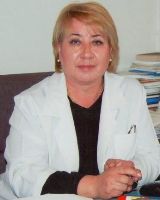COMPUTED TOMOGRAPHY IN THE DIAGNOSIS AND TREATMENT OF OTOLARYNGOLOGICAL PATIENTS
DOI:
https://doi.org/10.54890/1694-8882-2024-2-141Abstract
Computed tomography (CT) has become an integral tool in the diagnosis and treatment of otolaryngological diseases. This article discusses the role and significance of the use of computed tomography in otolaryngology, and also compares its advantages compared to traditional x-ray examination.
The use of computed tomography in otolaryngology provides a high degree of accuracy in visualizing the structures of the ear, nose and throat, which makes it possible to diagnose various pathologies with high sensitivity and specificity. CT has the ability to create three-dimensional images, which facilitates the understanding of anatomical relationships and allows for more accurate planning of surgical interventions.
The main advantages of computed tomography in otolaryngology compared to traditional x-ray examination are higher resolution, the ability to visualize in detail soft tissues and pathological changes, as well as improved diagnostic information about the structures of the middle and inner ear.
Thus, computed tomography plays an important role in the diagnosis and treatment of otolaryngological patients, providing more accurate and complete information about pathological processes and anatomical structures. Its advantages over traditional x-ray examination make it the preferred examination method in many clinical situations.
Keywords:
computed tomography, otolaryngology, diagnosis, treatment.References
1. Кузнецов С.В., Накатис Я.А. Современная томография в ринологии. Клиническая больница. 2012;1(1):23–24.
2. Карпищенко С.А., Алексеенко С.И., Колесникова О.М. Роль конусно-лучевой компьютерной томографии в диагностике ЛОР-заболеваний в детском возрасте. Consilium Medicum. Педиатрия (Прил.). 2016;4:102–105.
3. Пальчун В.Т., ред. Оториноларингология: национальное руководство, краткое издание.Москва: ГЭОТАР-Медиа; 2012. 656 с.
4. Пальчун В.Т. Болезни уха, горла, носа: учебник. 2-е изд. Москва: ГЭОТАР-Медиа; 2012. 320 с.
5. Труфанов Г.Е., Алексеев К.Н. Лучевая диагностика заболеваний околоносовых пазух и полости носа. 3-е изд. Санкт-Петербург: ЭЛБИ-СПб, 2015. 256 с.
6. Шевцова Т.А., Рясненко Э.А., Имжад С.Ю. Компьютерная томография в диагностике внутричерепных осложнений воспалительных заболеваний ЛОР-органов. В кн.: Молодежная наука и современность: Материалы 85-ой Международной научной конференции студентов и молодых ученых, посвященной 85-летию КГМУ. Курск, 23–24 апреля 2020 года. Часть I. Курск: КГМУ; 2020:912-914.
7. Карпищенко С.А., Зубарева А.А., Баранская С.В., Карпов А.А. Оценка данных конусно-лучевой компьютерной томографии для выбора оптимального доступа к верхнечелюстной пазухе. Практическая медицина. 2017;6(107):102-107.
8. Крылова А.И., Власова Г.В. Возможности компьютерной томографии в диагностике патологических состояний среднего уха у детей. Российская оториноларингология. 2003;1:80-83.
9. Бойко Н.В., Колесников В.Н., Писаренко Е.А. Диагностические возможности компьютерной томографии околоносовых пазух в сагиттальной проекции. Российская ринология. 2005;1:10–12.
10. Сипкин А.М., Никитин А.А., Амхадова М.А. Диагностика, лечение и реабилитация больных с осложненными формами верхнечелюстного синусита. Российский стоматологический журнал. 2013;1:40-43.







